15 Worst Mistakes You’re Making When Cooking Pasta
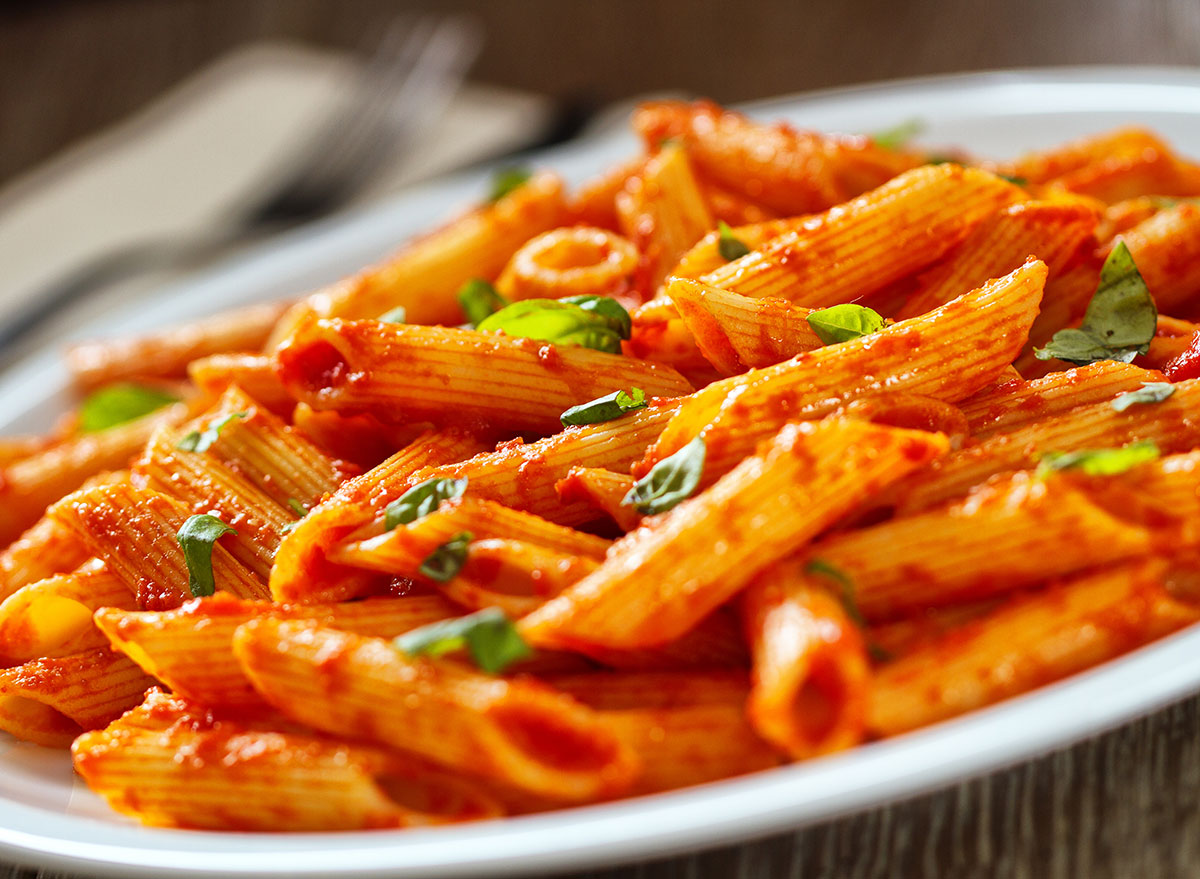
Spaghetti is probably one of the first dishes you learned how to make. However, that doesn’t necessarily mean you’re cooking it and other forms of pasta the right way. Sure, you’ve managed to create edible noodles and pour a jar of sauce on them, but to make the perfect pasta, it takes a lot more attention to detail than just tossing your dried noodles into a pot of boiling water. In reality, you’re probably making some very common mistakes while you’re cooking up a pot of pasta.
Did you ever think about exactly how much water you need, precisely when to drop in the pasta, and how often you should be stirring the pot? It turns out there are correct and incorrect answers to all of those culinary questions and more.
We asked chefs to share some of the most common mistakes people make when cooking pasta, along with easy fixes that’ll ensure you get the ideal al dente dish every time. And while you’re learning all about how to cook your pasta just right, make sure you check out the 40 Best and Worst Pasta Sauces—Ranked!
Mistake: Not using enough water
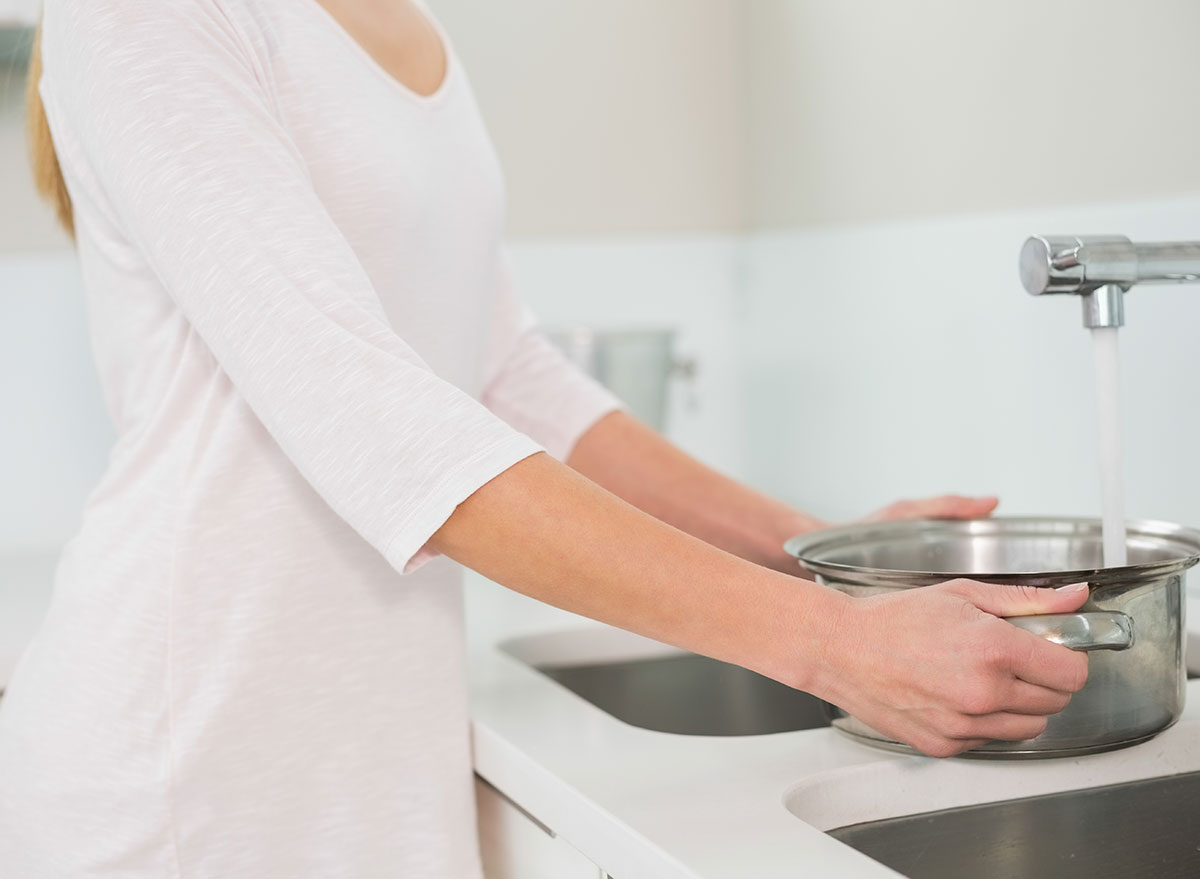
The water-to-pasta ratio matters. If you use too little water, your pasta will turn out gummy or too starchy, says Francesca Montillo, an Italian culinary instructor and author of The 5-Ingredient Italian Cookbook.
How to fix it: You need four quarts of water for every pound of pasta, according to Montillo.
So, if you have an 8-quart stockpot, which is typically the largest pot in a home kitchen, you’ll want to fill it up halfway if you’re throwing in a pound of dry pasta.
Mistake: Adding your pasta into the pot too soon
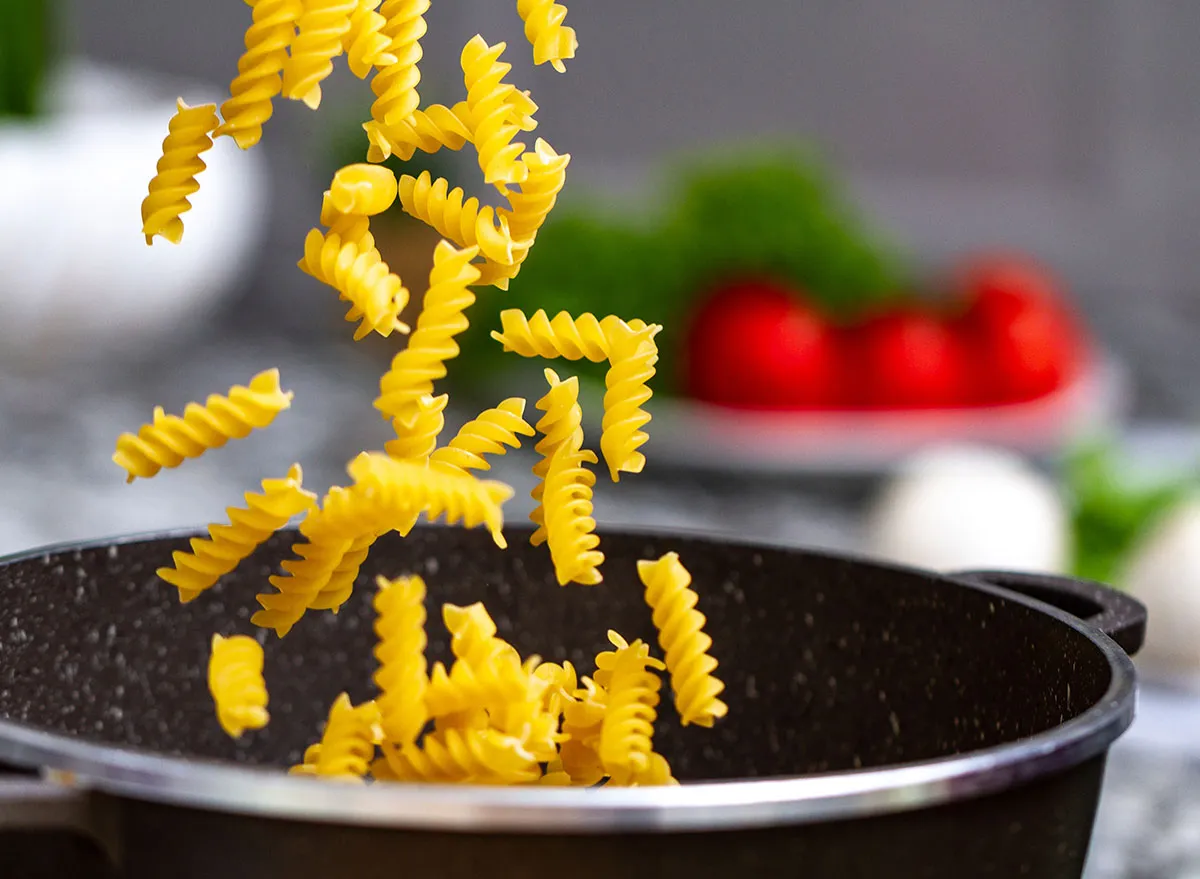
You know the expression, “A watched pot never boils”? Well, pasta added to a pot that’s not boiling will never be right.
“Whatever you do, do not add pasta to cold water,” says Montillo. “This increases the needed cooking time and gives you less granular texture. It is a downright ‘sin’ in the eyes of all Italian grandmas.”
How to fix it: Wait until your pot of water reaches a rolling boil, says Montillo. Then, toss in the pasta.
Mistake: Adding oil to your water
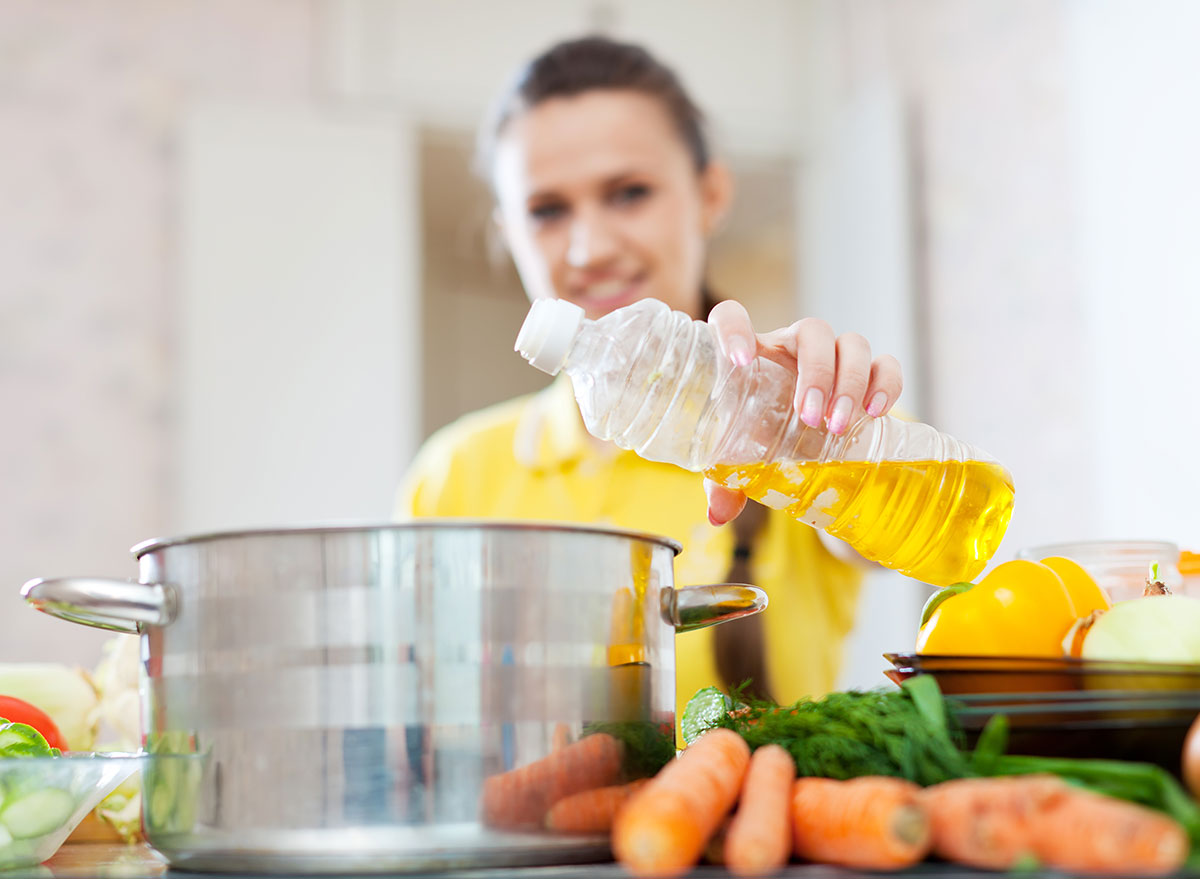
Some people add olive oil to pasta water to stop the pot from boiling over or to try and prevent the pasta from sticking together, but that’s a cardinal sin in Italian cooking.
“Home cooks should never, I mean never, add oil to pasta water, whether it’s fresh or dry pasta,” Montillo says.
The reason? The oil can make it tough for the sauce to stick to your pasta, she explains.
How to fix it: If you’re cooking your pasta in enough water and adding it to the pot once it’s boiling with big bubbles, your pasta will not stick together, according to Montillo.
So, back away from the oil, and instead, reach for the salt.
And for more pasta tips, here’s The Best-Ever Way to Keep Your Pasta from Sticking Together.
Mistake: Not salting your water enough
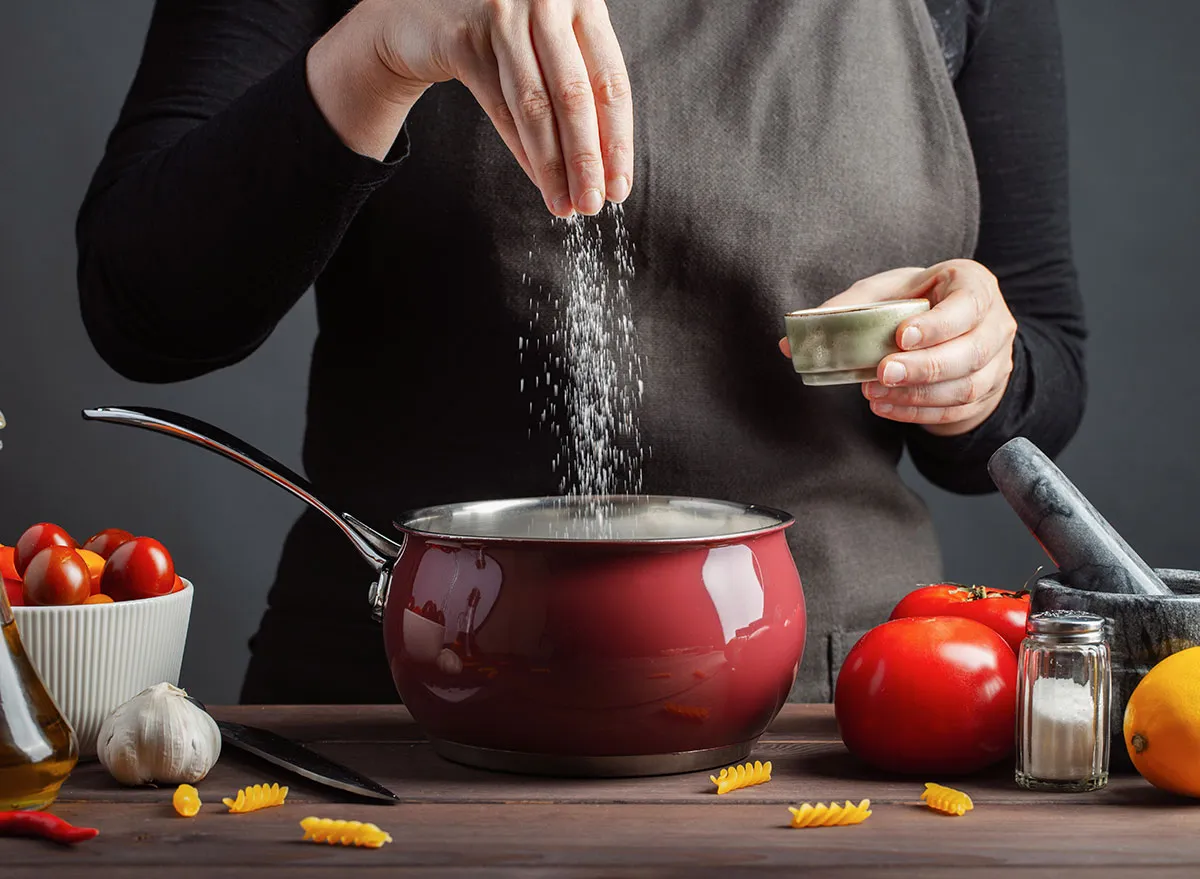
This is one of the rare instances when you don’t want to go easy on the salt shaker. That’s because the salt is what lends flavor to the pasta.
How to fix it: Add the salt as the water is getting ready to boil, but before you add the pasta to the pot. And please note: You’ll want to add a lot of it.
“The best way to determine the quantity of salt to add to the pasta water is by tasting it and adjusting the salt until it resembles the ocean water,” says Firoz Thanawalla, chef and owner of Chef’s Satchel, a chef supplies store. “Trust me, it may sound like overkill, but you will reap the benefits.”
Mistake: Waiting too long to stir your pasta
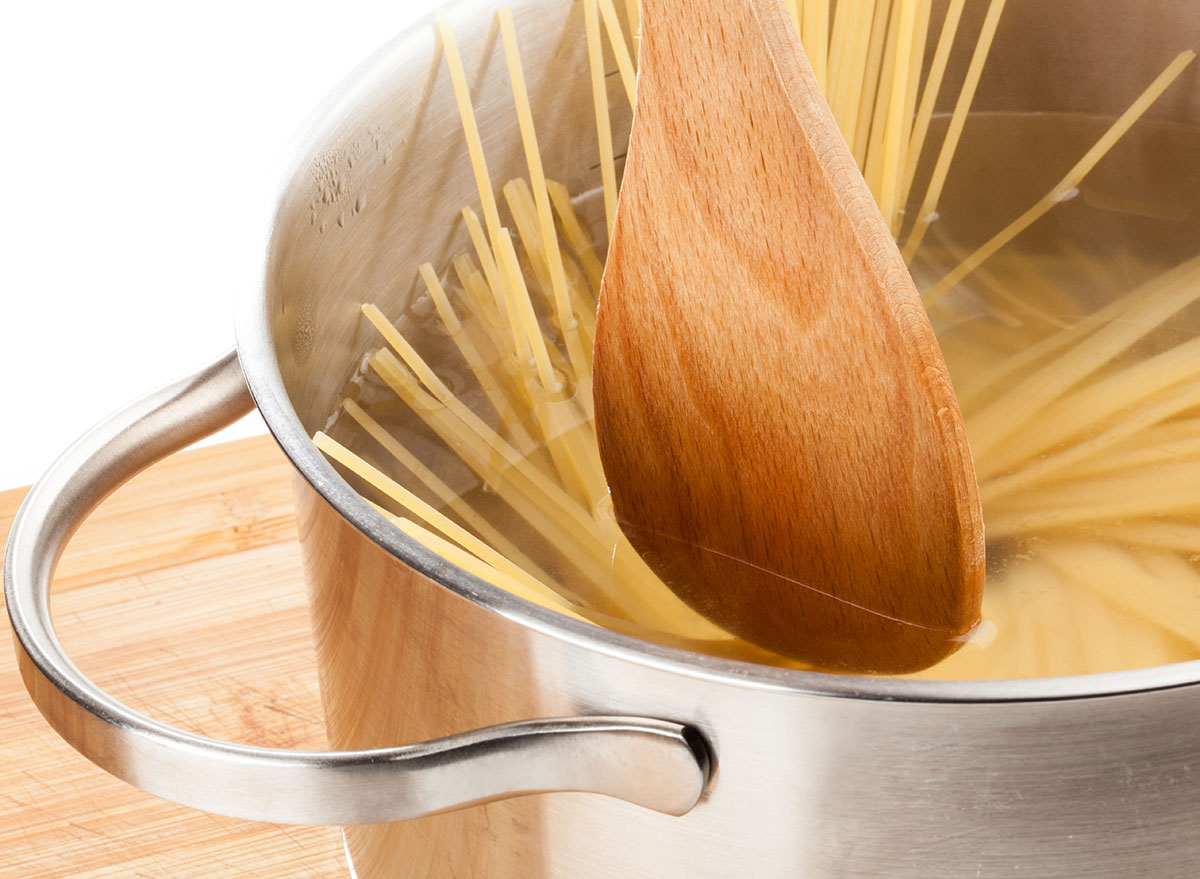
You probably already know that you need to stir your pasta to keep it from sticking, but chances are you’re letting it sit awhile and turning your attention to other things before giving it a good stir—and that’s a huge problem.
According to the experts at Italian food manufacturer Delallo, pasta is more likely to stick together at the beginning of the cooking process, before starches are released into the water.
How to fix it: The Delallo specialists say you should stir your pasta within the first two minutes of cooking.
And for those pasta leftovers, here’s The Single Best Way to Reheat Pasta You’ve Never Tried.
Mistake: Overcooking your pasta
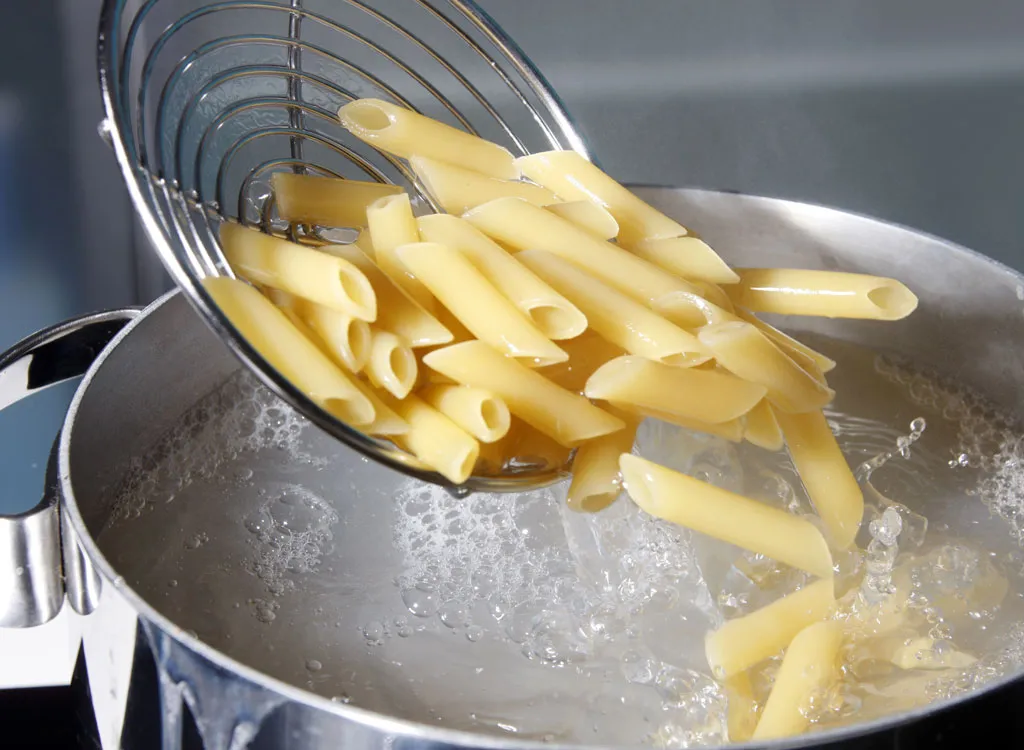
Traditionally, pasta is served al dente, meaning slightly firm to the bite. Overcooking pasta is one of the biggest mistakes a novice chef makes, according to Italian chef Michael Pirolo of Macchialina in Miami.
How to fix it: Pirolo, a James Beard Award semi-finalist, suggests reducing whatever cook time is on the box of pasta by a minute to a minute-and-a-half.
Mistake: Discarding your pasta water
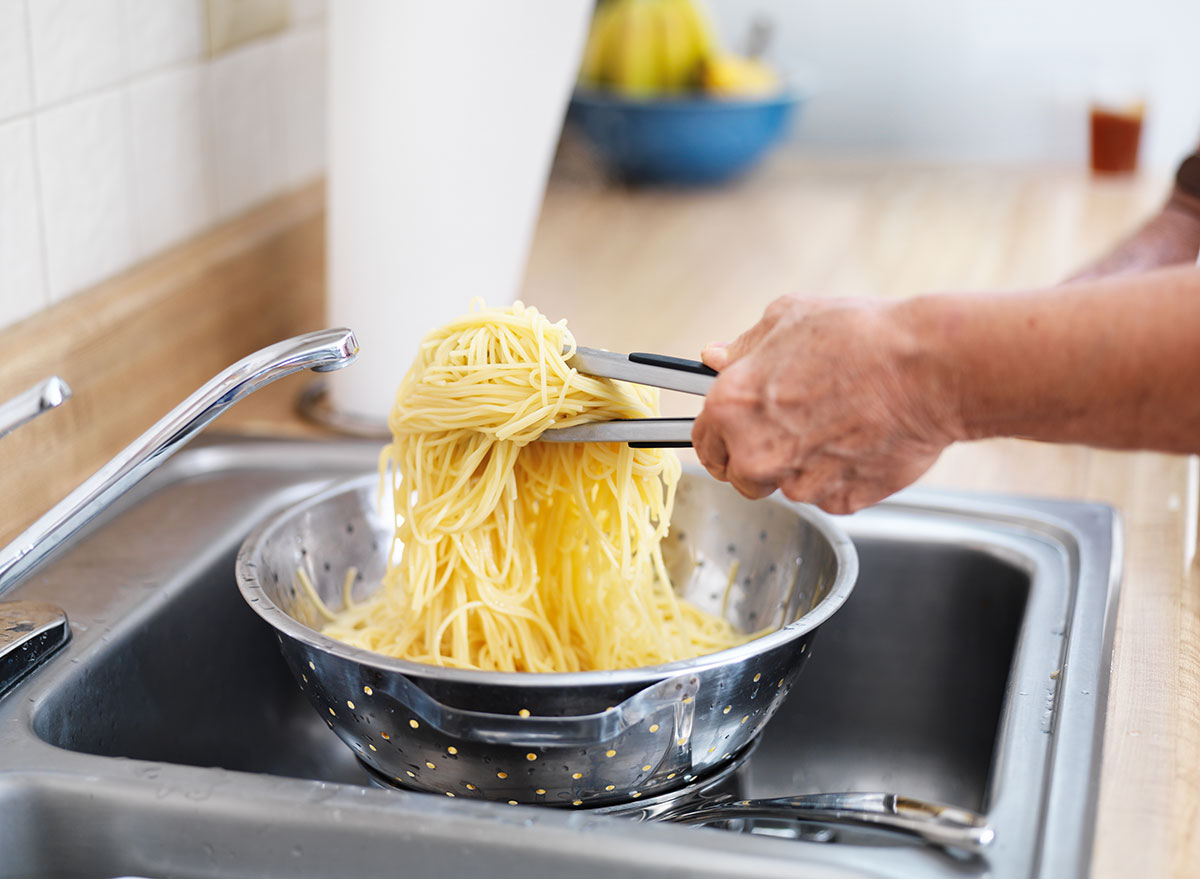
If you’re like most home chefs, you strain all of your pasta water after your noodles are cooked by pouring it down the drain. But not adding pasta water to dishes is one of the most frequent and egregious pasta-making mistakes, according to Mindy Oh, the executive chef of Mora Italiano in Encino, California. You’re missing out on a big opportunity to add flavor to your dish.
How to fix it: Pirolo says that you should save some of the pasta water and finish cooking your noodles in the sauce, adding a little of the water as needed.
“The water that you get from cooking off the pasta adds slight salinity, and the starchiness of the water helps bring the sauce and the pasta together,” Oh says. “Contrary to what you would expect, the sauce itself does not become watery, but helps the sauce achieve a more even consistency.”
According to Oh, lots of pasta water is the secret to a smooth and saucy Cacio e Pepe.
Mistake: Skimping on ingredients
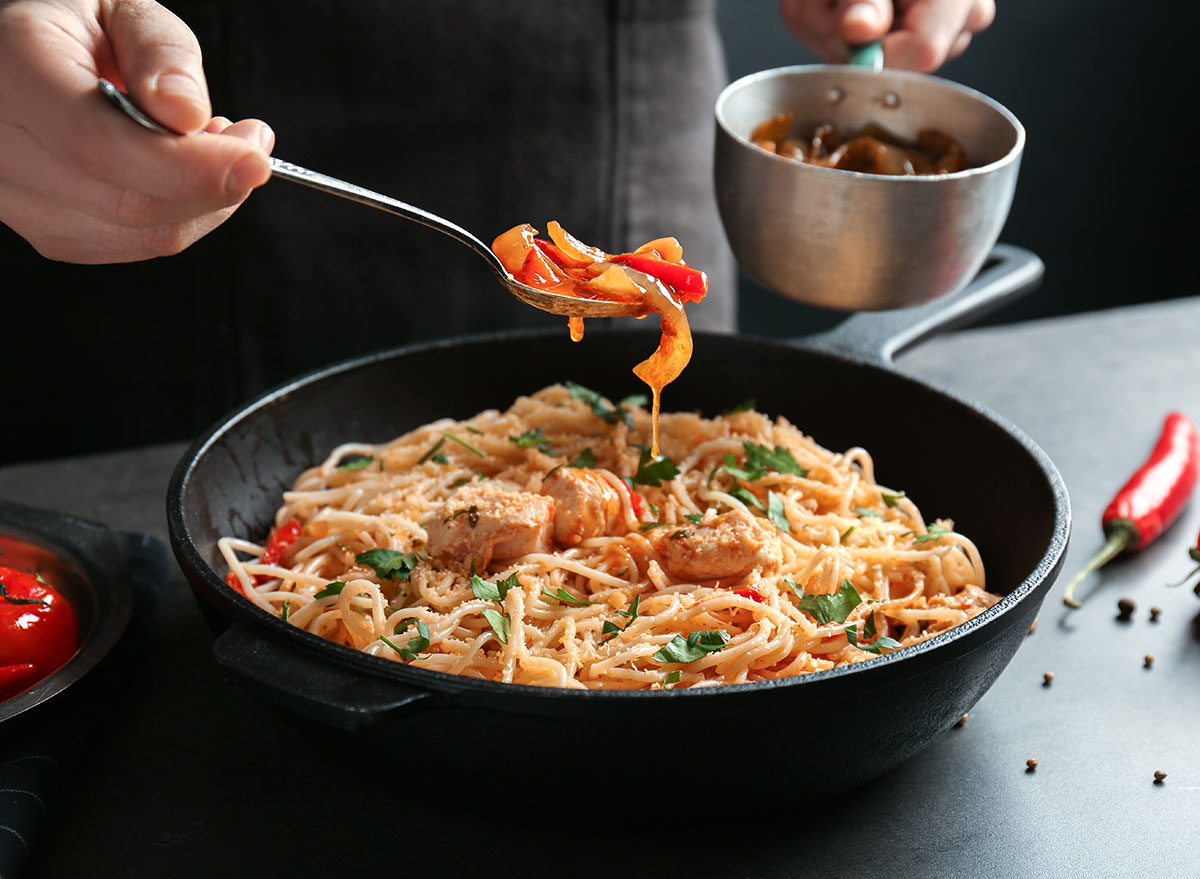
The ingredients set apart a decent pasta dish from a great one. Thinking you can skimp on produce, cheese, and other ingredients because they’ll be hidden in the sauce is a big mistake.
How to fix it: “From the tomatoes you use in the sauce to the pasta you purchase, be sure to use the best ingredients,” says Matt Carter, chef and co-owner of Fat Ox in Scottsdale, Arizona.
Also, don’t be afraid to use other cheeses besides parmesan, Carter says. He suggests trying pecorino or Ricotta Salata, which is a version of ricotta that’s drier than regular ricotta.
Mistake: Relying too much on the sauce
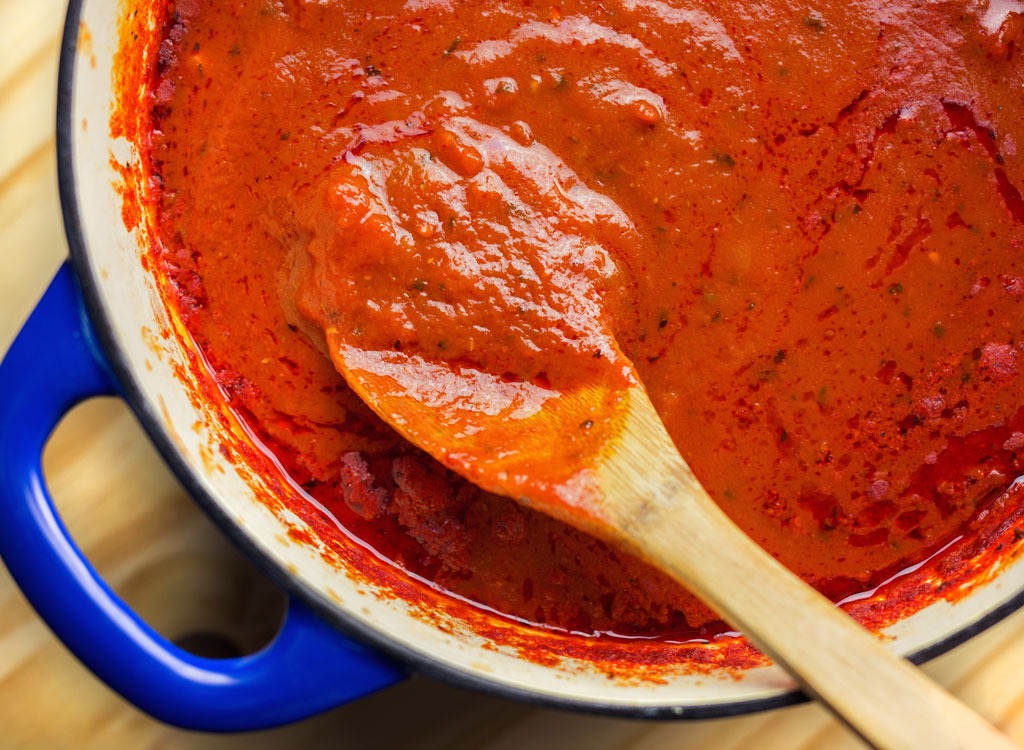
People tend to drown their pasta in sauce, says Frank Proto, a chef and instructor at the Institute of Culinary Education. And if you put sauce on top of your pasta, you’re probably not getting an even distribution of the topping either.
How to fix it: “Pasta should be ‘dressed’ like a salad,” says Proto.
After it’s cooked, remove your pasta from the pasta water and place it in your pan of sauce. Coat all the pasta in the sauce, adding the pasta water as needed. This way, you’re ensuring every piece of pasta gets in contact with the sauce.
And now that you know how to cook pasta the right way, This Is the Easiest, Cheapest Pasta Dish You Can Make at Home.
Mistake: Throwing pasta down the garbage disposal

If you follow the above tips, there should be only clean plates and no reason for the pasta to be thrown out at all. But if you did overdo it and you have some pasta leftover, do not put it in the garbage disposal.
Foods that are cooked in water, including pasta and rice, have the potential to expand and continue to do so in the garbage disposal every time they come in contact with water, explains Doyle James, president of Mr. Rooter Plumbing. This can clog your drain or block your disposal trap, he says.
How to fix it: Save your leftovers or toss them in the trash, not down the drain.
Mistake: Microwaving your leftovers
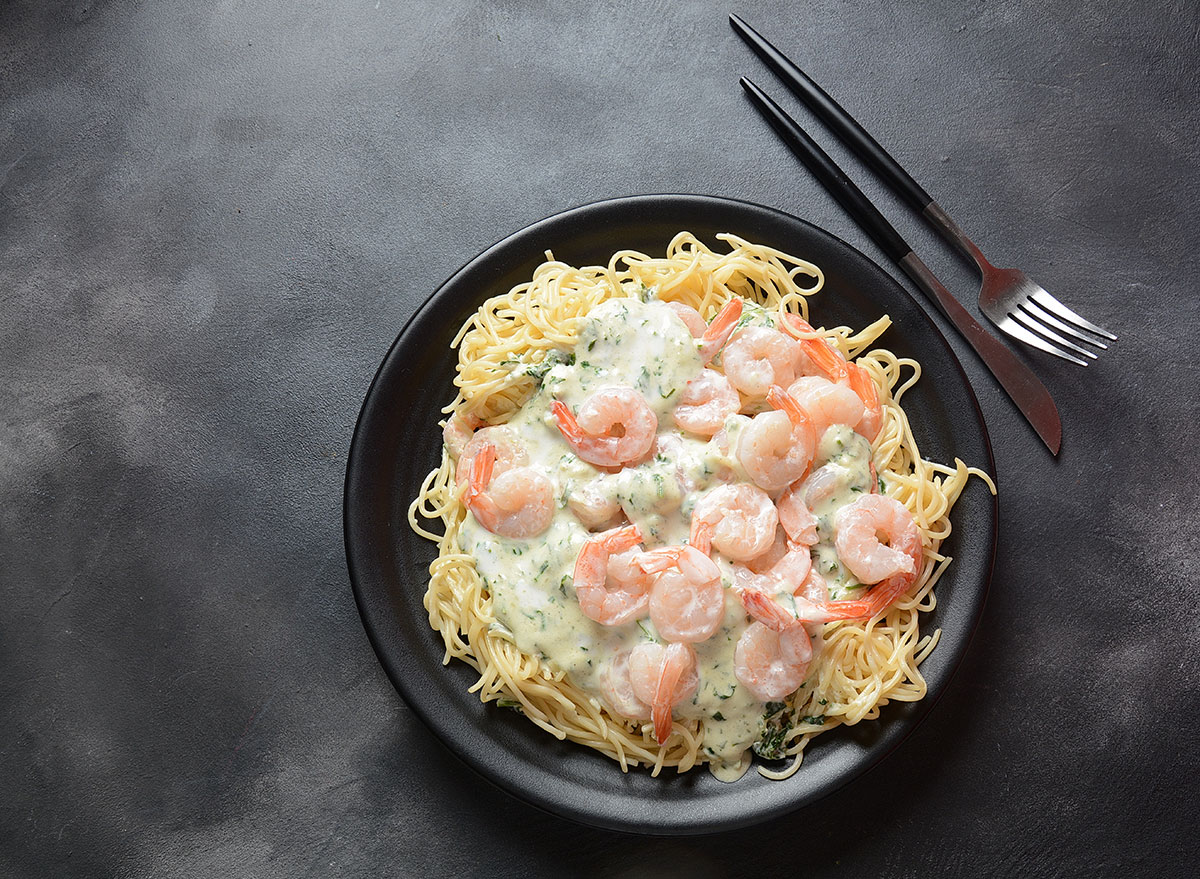
Aside from the fact that microwaving pasta in a red sauce will stain your Tupperware for good, it’s not the way to a flavorful dish of noodles. Reheating your pasta in a pan is more time-consuming, but it’s worth the extra effort.
How to fix it: “Use a hot pan with a little bit of water or stock to loosen it up,” executive chef Bryan Forgione of Buddy V’s Ristorante in Las Vegas previously said to Eat This, Not That. Adding that extra bit of liquid will help the noodles taste fresh the second time around.
Mistake: Not taking shape into account
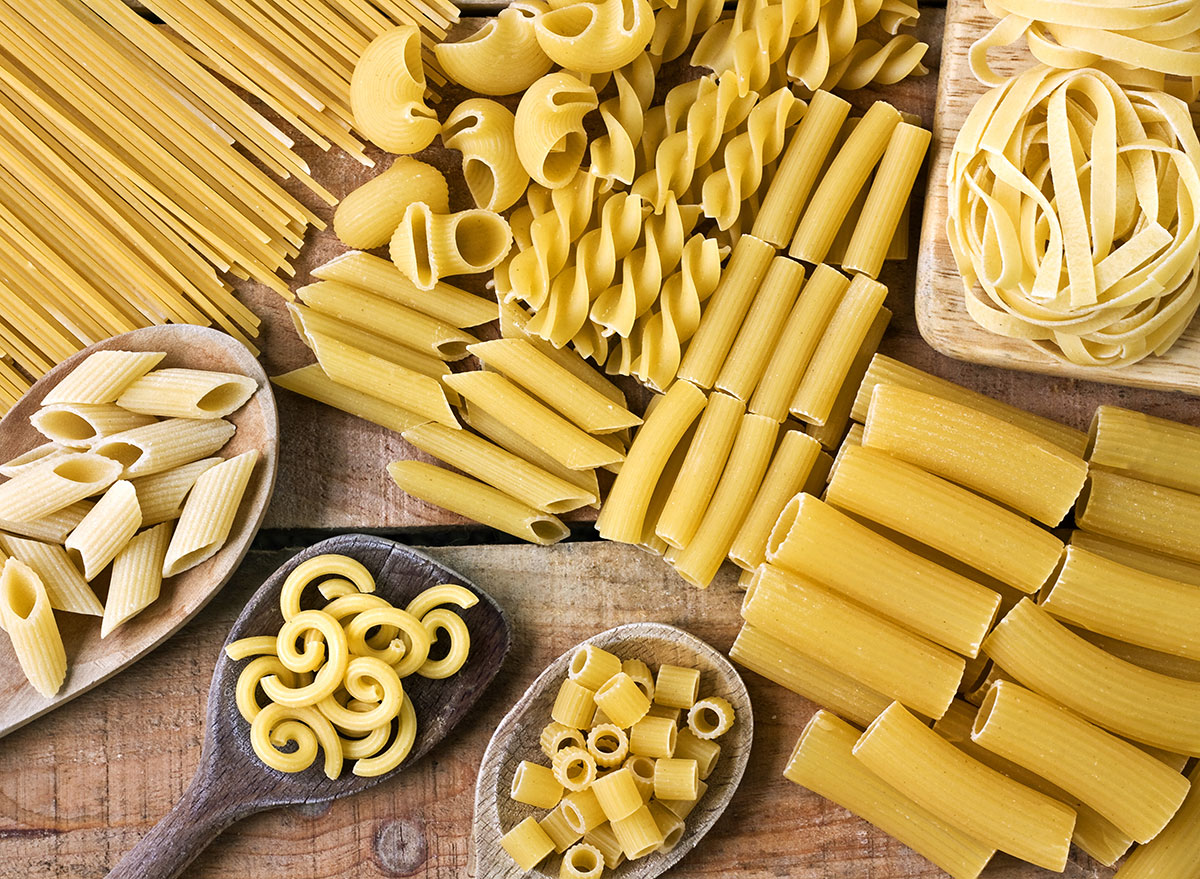
Objectively, pasta shapes don’t taste different from one another. But different shapes are better for different recipes, so take that into account when you’re shopping. (There’s a reason those Annie’s mac and cheese shells perfectly absorb the creamy sauce!)
How to fix it: Consider your sauce pairings. Farfalle, for instance, is great with recipes where you’re adding chopped vegetables, while rigatoni is perfect for chunky sauces.
Mistake: Overlooking pasta salad
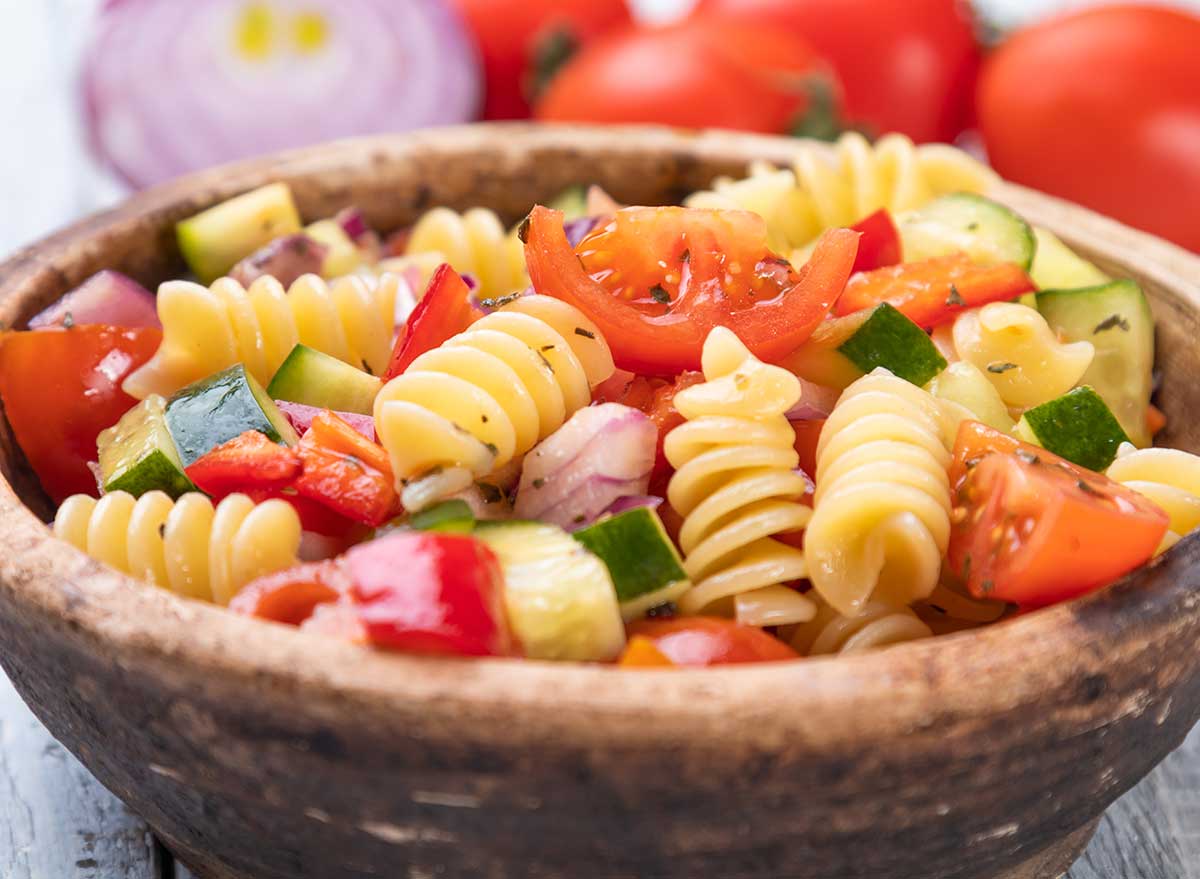
Even if the thought of cold pasta doesn’t appeal to you, give pasta salad a try. There are so many options out there, you’re bound to find one you love.
How to fix it: Try one of these 10 Easy, Healthy Pasta Salad Recipes.
Mistake: Thinking pasta is unhealthy
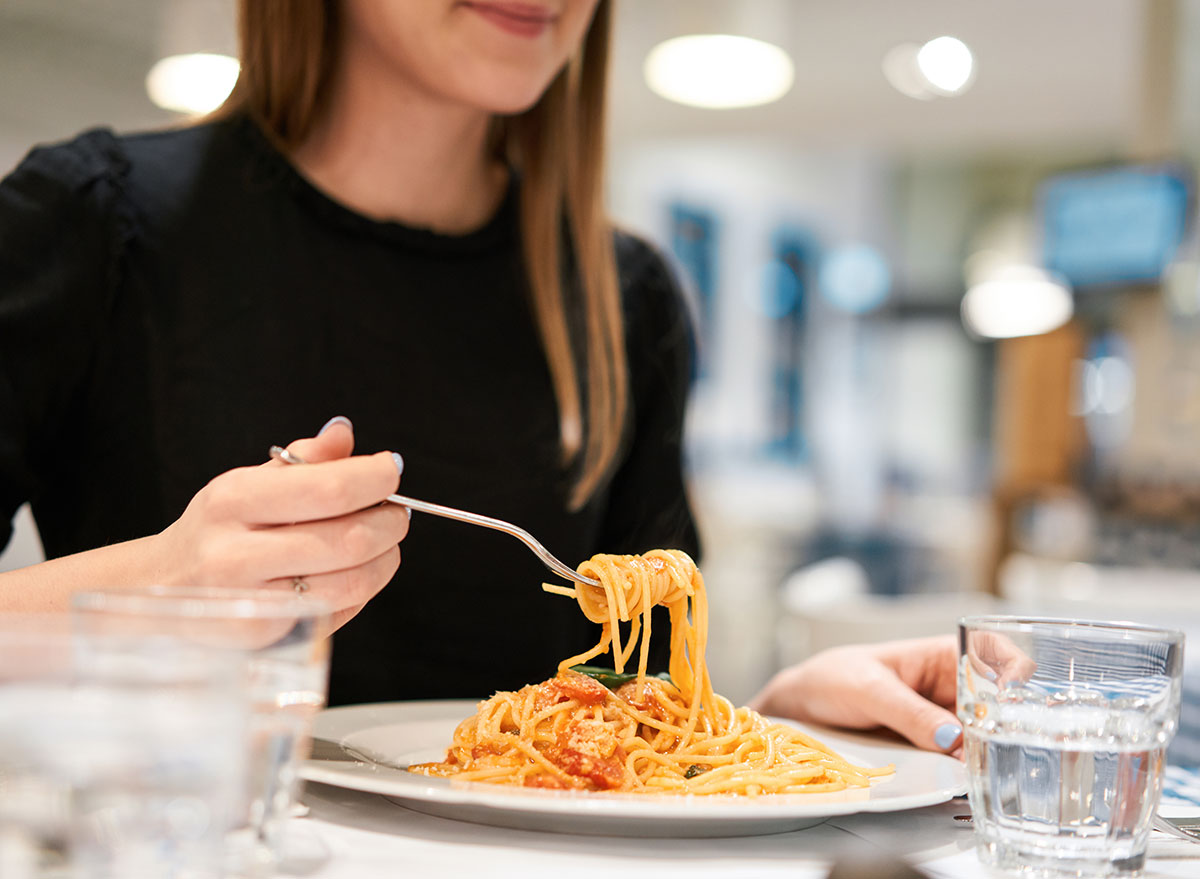
Pasta is a satisfying source of carbs, and it can be a part of a healthy diet. There are plenty of pasta recipes that feature vegetables and other healthy ingredients while still providing that delicious taste. You don’t have to ban pasta from your life!
How to fix it: Try one of these 17 Easy Pasta Recipes That Are Surprisingly Healthy.
Mistake: Not considering pasta alternatives
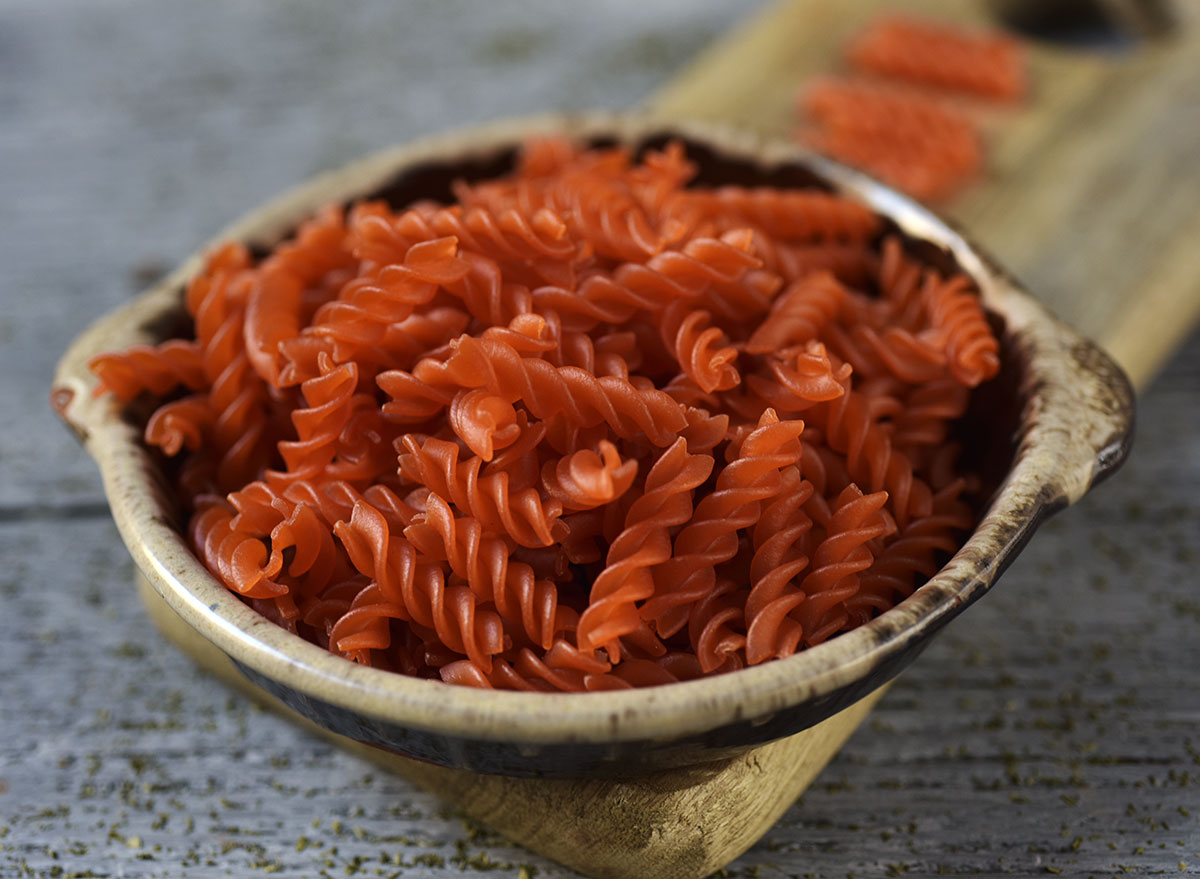
Sure, you’ve heard of zoodles. But if you’ve never tried pulse pasta, you’re missing out. You can find everything from high-protein chickpea pasta to black bean pasta noodles, and they can add some unexpected flavor to your recipes. Don’t knock it until you try it!
How to fix it: Next time you’re at the store, consider giving one of these pasta alternatives a try.
And for more kitchen tricks, don’t miss these 52 Life-Changing Kitchen Hacks That’ll Make You Enjoy Cooking Again.